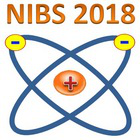Speaker
Dr
Seth Veitzer
(Tech-X Corporation)
Description
Negative hydrogen ion sources are widely used to produce neutron beams, relevant to both accelerators and fusion devices. There are a number of different kinds of negative hydrogen sources in use today, including inductively coupled plasma sources (ICPs). For instance, coils external to the ion source chamber can be designed to deposit power into hydrogen plasmas to create highly excited ionic states, which then can produce negative hydrogen ions. Modeling ICP ion sources using traditional Particle-In-Cell (PIC) codes is difficult because of inherent separation of time scales between electron and ion motions severely limits the number of rf periods that can be modeled with currently available computational resources. In some cases, fluid-based models can be used to overcome these difficulties. For these models, simplifying assumptions are made about the electrons and their energy distributions that enable longer time steps. The loss of information about electron kinematics may not be so important in determining the plasma chemistry and valid predictions of ion source performance can in some cases be obtained using fluid-based models.
We present our progress developing a drift-diffusion model implemented using the USim plasma-fluid framework. This model is able to capture both the deposition of energy into the source plasma and diffusion of energy and density from rf and DC power sources, and also the production of different ion species and vibrational states through inclusion of plasma chemistry models. We first determine the largest reaction rates in the production of negative hydrogen using a global model, which depends on the specific parameters of the ion source being modeled, such as neutral gas density and geometric factors for surface processes. These rates determine the ion species that are needed in simulations in order to model negative hydrogen production. rf power deposition into the plasma is done separately from the drift-diffusion solve, but for dense plasmas modeled here, the numerical time-step restrictions for rf power deposition are typically larger than those for modeling the plasma chemistry, and so do not reduce simulation performance.
Fluid model equations corresponding to electron number and energy density are solved numerically on either structured or unstructured meshes. Source terms for the electron number densities are determined by the plasma chemistry, while sources for the energy density equations are a result of both inelastic collisions and energy deposition from external electromagnetic fields. We apply our models to the simulation of the SNS external antenna negative hydrogen ion source, and demonstrate the feasibility of using fluid-based models for simulation of these types of ICPs for negative hydrogen ion production. We note that we are developing model capabilities that are general enough to be applied to a large variety of different geometries, electric field configurations, and plasma parameters.
This work was performed under the auspices of the Department of Energy, Office of Basic Energy Sciences Award #DE-SC0009585.
Primary author
Dr
Seth Veitzer
(Tech-X Corporation)
Co-authors
Dr
Anton Spirkin
(Tech-X Corporation)
Dr
Peter Stoltz
(Tech-X Corporation)

